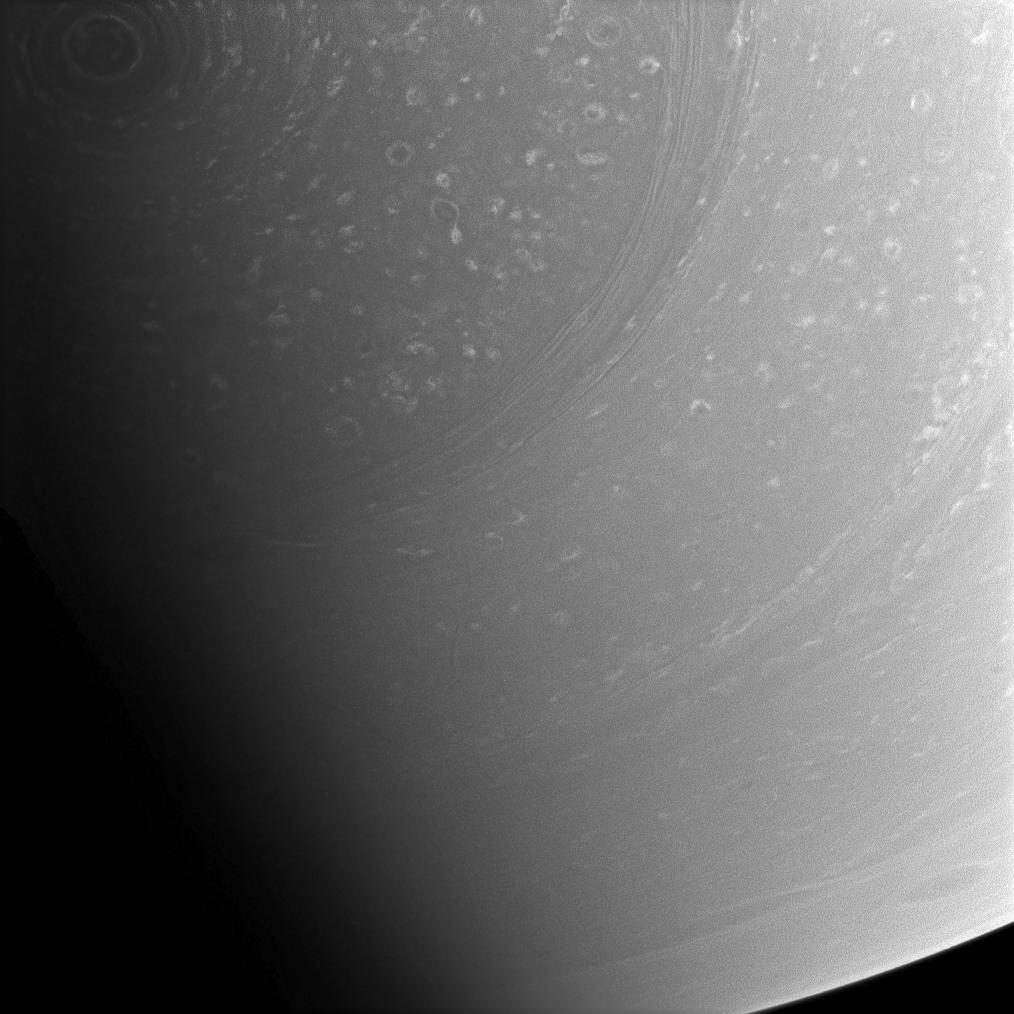Seasons Conceal South Pole Storm

| PIA Number | PIA10572 |
|---|---|
| Language |
|
The hurricane-like vortex encircling Saturn's south pole is still visible in the top left of this image as it slowly slips into darkness with the planet's changing seasons. Many smaller storms are visible in the light of more northern latitudes.
The summer sun fully lit the south pole upon the Cassini spacecraft's arrival in 2004. (See Polar Details.) But, as the planet continues its 29-year orbit, the south pole will eventually plunge into darkness and sunlight will begin to reveal instead features at the north pole, such as the hexagon. (See Saturn's Active North Pole.)
The winds of the towering south polar vortex blow at 550 kilometers (340 miles) per hour. (See Looking Saturn in the Eye.)
The image was taken with the Cassini spacecraft wide-angle camera on Dec. 3, 2008 using a spectral filter sensitive to wavelengths of infrared light centered at 752 nanometers. The view was obtained at a distance of approximately 546,000 kilometers (339,000 miles) from Saturn and at a Sun-Saturn-spacecraft, or phase, angle of 76 degrees. Image scale is 29 kilometers (18 miles) per pixel.
The Cassini-Huygens mission is a cooperative project of NASA, the European Space Agency and the Italian Space Agency. The Jet Propulsion Laboratory, a division of the California Institute of Technology in Pasadena, manages the mission for NASA's Science Mission Directorate, Washington, D.C. The Cassini orbiter and its two onboard cameras were designed, developed and assembled at JPL. The imaging operations center is based at the Space Science Institute in Boulder, Colo.
For more information about the Cassini-Huygens mission visit http://saturn.jpl.nasa.gov . The Cassini imaging team homepage is at http://ciclops.org .
Credit: NASA/JPL/Space Science Institute
